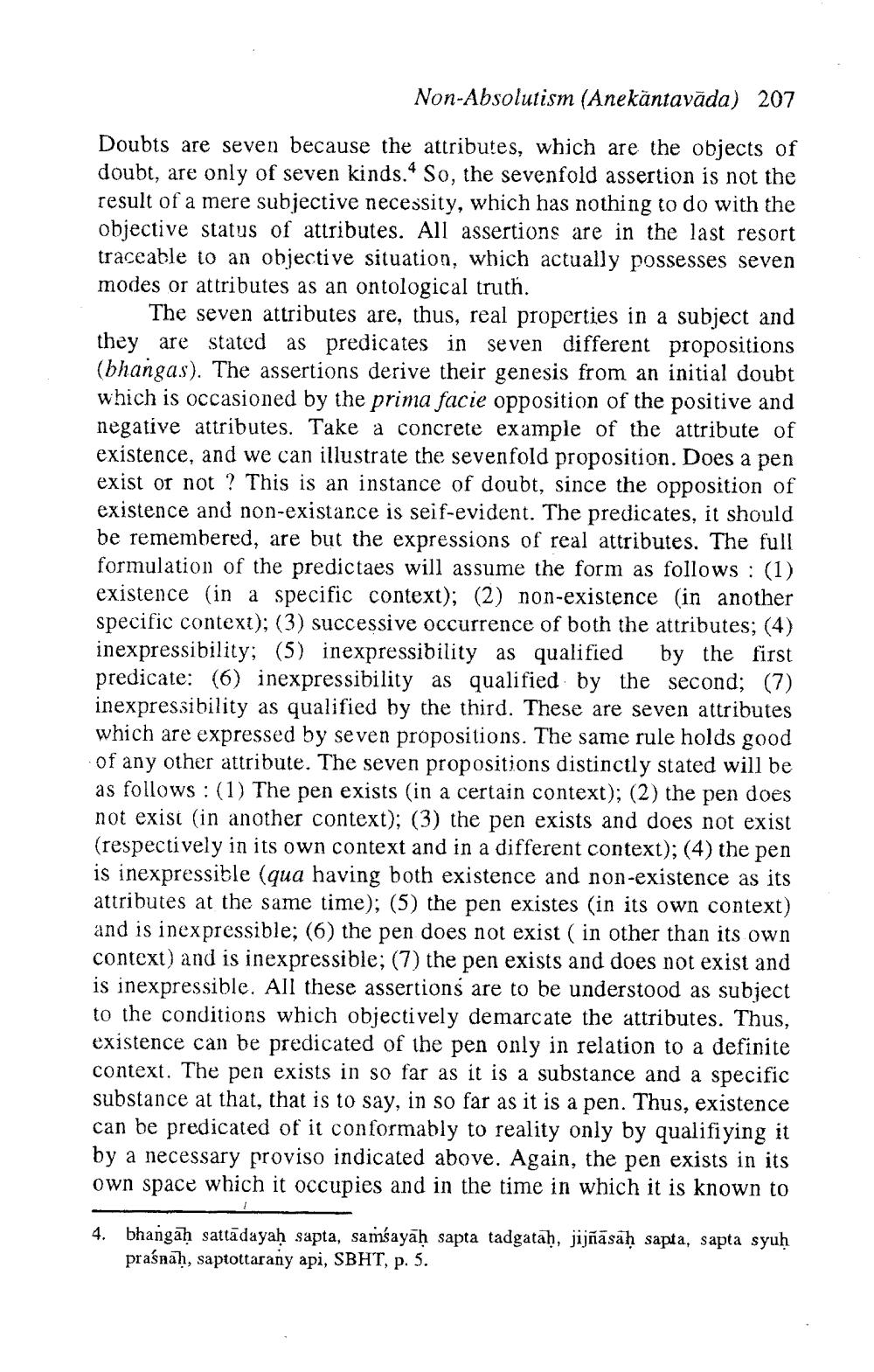________________
Non-Absolutism (Anekantavāda) 207
Doubts are seven because the attributes, which are the objects of doubt, are only of seven kinds. So, the sevenfold assertion is not the result of a mere subjective necessity, which has nothing to do with the objective status of attributes. All assertions are in the last resort traceable to an objective situation, which actually possesses seven modes or attributes as an ontological truth.
The seven attributes are, thus, real properties in a subject and they are stated as predicates in seven different propositions (bhangas). The assertions derive their genesis from an initial doubt which is occasioned by the prima facie opposition of the positive and negative attributes. Take a concrete example of the attribute of existence, and we can illustrate the sevenfold proposition. Does a pen exist or not ? This is an instance of doubt, since the opposition of existence and non-existance is seif-evident. The predicates, it should be remembered, are but the expressions of real attributes. The full formulation of the predictaes will assume the form as follows: (1) existence in a specific context); (2) non-existence in another specific context); (3) successive occurrence of both the attributes; (4) inexpressibility; (5) inexpressibility as qualified by the first predicate: (6) inexpressibility as qualified by the second; (7) inexpressibility as qualified by the third. These are seven attributes which are expressed by seven propositions. The same rule holds good of any other attribute. The seven propositions distinctly stated will be as follows: (1) The pen exists (in a certain context); (2) the pen does not exist in another context); (3) the pen exists and does not exist (respectively in its own context and in a different context); (4) the pen is inexpressible (qua having both existence and non-existence as its attributes at the same time); (5) the pen existes (in its own context) and is inexpressible; (6) the pen does not exist ( in other than its own context) and is inexpressible; (7) the pen exists and does not exist and is inexpressible. All these assertions are to be understood as subject to the conditions which objectively demarcate the attributes. Thus, existence can be predicated of the pen only in relation to a definite context. The pen exists in so far as it is a substance and a specific substance at that. that is to say, in so far as it is a pen. Thus, existence can be predicated of it conformably to reality only by qualifiying it by a necessary proviso indicated above. Again, the pen exists in its own space which it occupies and in the time in which it is known to
4. bhangah sattādayah sapta, samśayāḥ sapta tadgatah, jijñāsaḥ sapta, sapta syuh
praśnah, saptottarany api, SBHT, p. 5.




